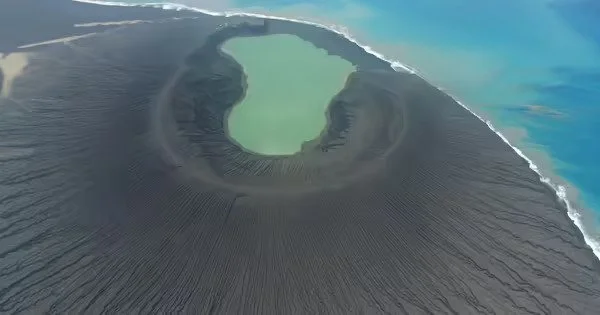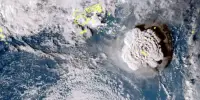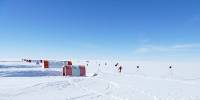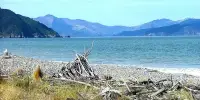The Tonga eruption, also known as the Hunga Tonga-Hunga Ha’apai eruption, occurred on December 20, 2021. It was a submarine eruption that took place near the islands of Tonga in the South Pacific Ocean. The eruption produced a massive ash cloud that rose up to 40 kilometers (25 miles) into the atmosphere. The ash cloud was visible from space and caused disruption to air travel in the region. It also triggered a tsunami that caused damage to coastal areas of Tonga and other Pacific islands.
A ‘back-projection’ technique reveals new information about the Tonga volcanic eruption that literally shook the world. A new analysis of seismic data collected following the massively violent eruption of the underwater volcano Hunga Tonga-Hunga Ha’apai on January 15, 2022, has revealed new and useful information about the sequence of events. In an article published in Earth and Planetary Science Letters, Kotaro Tarumi and Kazunori Yoshizawa of Hokkaido University discuss their methods and findings.
“We demonstrated that the eruption was made up of two distinct sequences of events, some of which occurred quasi-periodically in the first. It will be worthwhile to conduct additional research into the mechanisms involved in such eruption cycles” Yoshizawa, a seismologist and geophysicist, agrees.
Seismic, tsunami, and atmospheric waves were produced by the volcano, and they were recorded all over the world. According to recent research, it was one of the most energetic eruptions ever recorded by modern instruments.
We demonstrated that the eruption was made up of two distinct sequences of events, some of which occurred quasi-periodically in the first. It will be worthwhile to conduct additional research into the mechanisms involved in such eruption cycles.
Kazunori Yoshizawa
“Eruption episodes are difficult to fully analyze using seismic surface waves, but we have teased out more details using what are known as teleseismic-P waves,” says Tarumi, a PhD student. These are seismic waves that have traveled through the planet to locations far from the site of the eruption. In this case, the team used seismic data collected from locations as far away as a 93-degree angle around the planet’s circumference.
The team’s “back-projection” analysis successfully detected the locations and timing of multiple explosions, even though P-waves from each eruption overlapped and were masked by other seismic signals and noises.
The back-projection technique reverses the transmission of seismic signals to reveal details of a potential source that radiated seismic waves. It was originally developed and applied for imaging the source processes of large earthquakes, but is now proving equally applicable to large scale volcanic events.
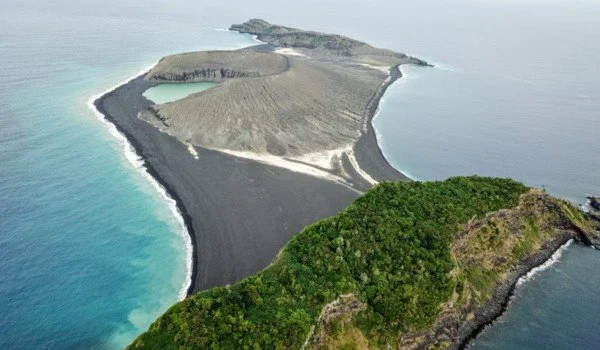
The findings revealed that the eruption sequence was divided into two parts. The first sequence began at 04:02 UTC on January 15, and progressed to large explosions at 04:15 UTC and 200 to 300 seconds later. The whole thing lasted at least until 04:35 UTC. A second series of eruptions began four hours later and lasted six to seven minutes, culminating in a massive eruption at 08:31. Satellite imagery captured the first eruption sequence’s dramatic ash cloud, but the precise details of the underwater events have remained elusive until now.
One interesting finding was that significant explosive eruptions intermittently occurred at 270 to 280 second intervals, a frequency suggesting a resonance effect with the atmosphere and the Earth. “This apparent agreement of the eruption cycle and the atmospheric resonant oscillation with the Earth could be coincidental, but it certainly deserves further exploration,” Yoshizawa concludes.
The eruption also had a significant impact on marine life in the region. The ash and other materials released by the eruption had a negative effect on coral reefs and other marine ecosystems, and scientists are still studying the long-term impact of the eruption on the region’s marine biodiversity.
Overall, the Tonga eruption was a major event that had significant impacts on the environment and the people of the surrounding region. It is likely to be studied for years to come as scientists continue to analyze its impact on the Earth’s climate and the surrounding ecosystems.
